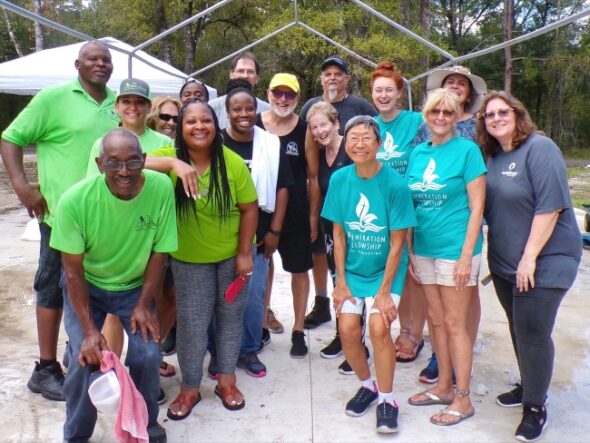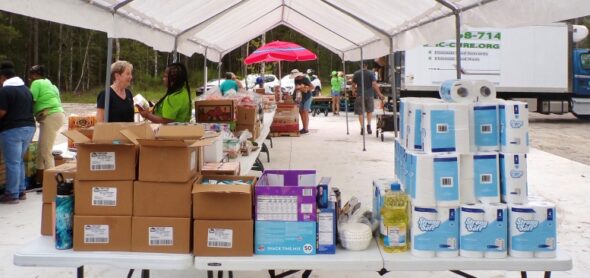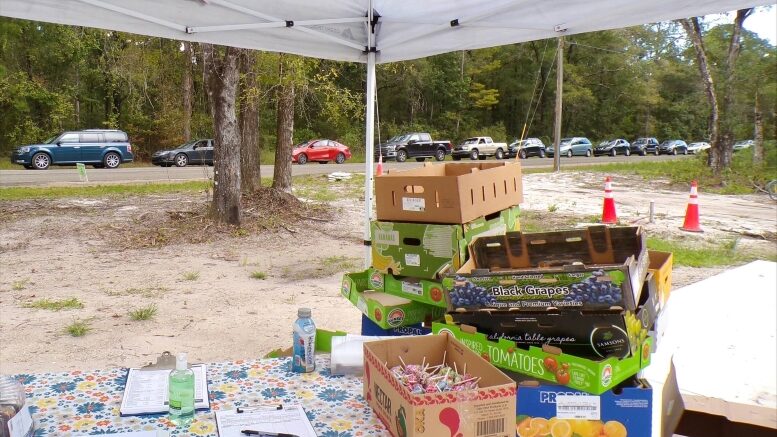By Chloe Smith
With poverty and food insecurity rates rising in the U.S., most people imagine those living on the streets in urban areas are most affected. In reality, it’s residents living in rural areas that are hit the hardest.
Flagler Estates, for example, is one of the many rural communities in St. Johns County experiencing significantly limited access to adequate food.
“With the rural area, their mindset is survive,” nonprofit leader Simon Simon said.
Hunger in the U.S. rose dramatically in 2022, with approximately 10.4 million more people experiencing food insecurity than the year prior, according to the U.S. Department of Agriculture. But rural areas see an even higher food insecurity rate than urban, reports Feeding America.
Located just eight miles southeast of Hastings, Florida, Flagler Estates is an unincorporated rural community with a population of 3,577 as of 2023.
“It’s like a neighborhood, which is why it’s called Flagler Estates. But when you drive through it… you feel like you’re going to a third-world country,” nonprofit leader Vickie Leese said. “But people live out there in trailers and RVs.”
As more households struggle with food insecurity each year, rural areas like Flagler Estates are at risk like never before.
Living in a rural community comes with unique challenges that make affording food more difficult, such as a lack of transportation or nearby grocery stores, leading to limited access to affordable food.
“Flagler Estates was an underserved community because a lot of the people don’t have mobility or a vehicle to go even to Hastings to pick up,” nonprofit leader David Rice said. “Some of them do, some of them don’t.”
Other frequently seen issues in rural areas, such as jobs that pay low wages, underemployment, and less prominent job opportunities, contribute to the higher food insecurity rate as well.
About eight months ago, two nonprofits – The Simon’s House and Epic Cure – partnered to feed the food-insecure Flagler Estates population. Every Thursday, from 4 p.m. to 5 p.m., the group serves, on average, about 120 families, and the number continues to increase each week.

“It’s like setting up a grocery store literally and then taking it back down every Thursday,” Leese said. “We set up tents then tables. We unload the truck, put it out on the tables… distribute it out.”
Co-founders of The Simon’s House, Simon Simon and Stephanie Simon, and Epic Cure volunteers David Rice and Vickie Leese are the main leaders of the weekly food distribution.
Having grown up in a rural area of Palatka, Florida, and having experienced food insecurity in the past, Simon can relate deeply to those living in Flagler Estates.
“I was crying because I didn’t want to get food stamps, you know, but I had a little boy at the time, and I had to, you know,” Simon said. “When that lady encouraged me, she said, ‘You know what? Out of all these years, you’ve been paying taxes… now it’s your time.’”
Both nonprofits also run food distributions in the more urban St. Augustine, Florida, where nonprofit leaders say the needs differ in severity.
At the Epic Cure warehouse in St. Augustine, for example, Leese says many of the people they serve have jobs.
“A lot of them have… they live in a home. That’s giving them three or four hundred dollars worth of groceries each week… makes a difference in having electricity or water or then that kind of thing,” Leese said.
For those living in more rural areas, the same cannot always be said.
“Out there, it’s people who are… they don’t have electricity, and anything we do isn’t going to fix that,” Leese said, referring to the Flagler Estates population.
On distribution day in Flagler Estates, nonprofit leaders say the line of cars waiting to receive food will go for miles, with many arriving at the site up to an hour before the distribution begins.

“There are some homeless people that come and get food from us, but predominantly, these are people that have families,” Rice said. “They’re elderly people living on a fixed income, or they’re a single mom trying to raise a couple of kids on, again, a fixed income.”
Along with food insecurity, many families, such as those in Flagler Estates, can be put on the verge of displacement by minor or unanticipated expenses.
“Any slight tragedy, a car breaking down, you know, a serious illness, can really disrupt life. And all of a sudden, they’re homeless,” Rice said.
Besides having limited access to consistent, nutritious food and resources like electricity, most of the Flagler Estates food insecure population also lacks access to other necessities, like hygiene products.
“Three kids got out of their mom’s car and went crazy because we had soap,” Leese said. “They don’t get soap, you know… it’s a whole different dynamic of what’s poor.”
As more families begin to feel the effects of food insecurity, nonprofit leaders say raising awareness of how it impacts communities such as Flagler Estates, is more than necessary.
“One of the things that we see a lot with volunteers- that have never done anything on the front line of confronting poverty and need- is they’re not aware. They had no idea. They have no idea that people… but that’s the challenge. We just don’t know,” Rice said. “We don’t realize that there are scabs of people that are living day to day in our community.”
To learn more about those serving the Flagler Estates food insecure population and how to support, visit https://the-simons-house.org/ and https://www.epic-cure.org/.



Be the first to comment on "Food insecurity grows worse in Flagler Estates"